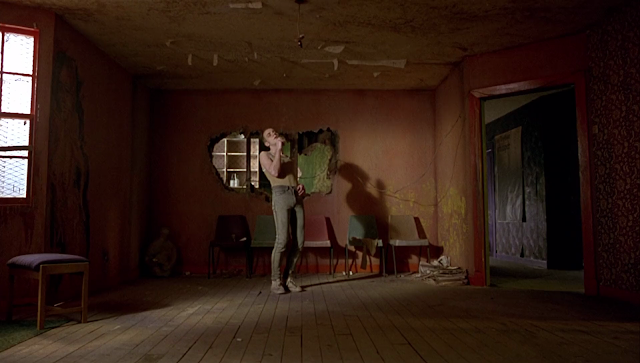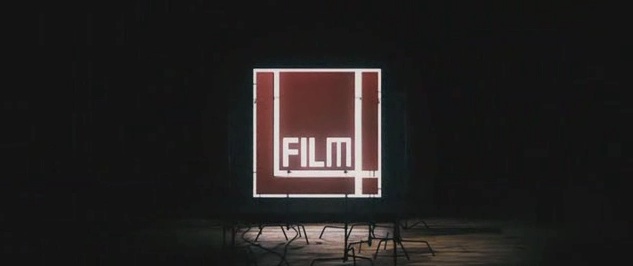Trainspotting: Editing
Questions in the exam could focus specifically on the ways in which editing (continuity editing, shot transitions, time and space, pace and experimental editing techniques) create meaning for audiences BUT a number of other types of questions may require you to make reference to editing - even if the term is not in the title. Answers to questions on representation or aesthetics may include discussion of elements of editing and you should mention editing in any essays about topics such as ideology and narrative.
To refresh your memory about the key terms for editing, click on the links below.
Remember, questions on editing will require you to discuss, in detail, certain scenes from the film - so make sure you have at least three that you can recall in detail. I would suggest you have detailed knowledge of the opening and closing scenes and one other key scene - and that you are able to make passing reference to a number of other moments in the film. Detailed notes on key scenes from the film, including the opening and closing scenes, can be found below.
Trainspotting: Other Key Scenes
Mainstream Hollywood films frequently adopt a style of editing known as continuity editing - editing that is often referred to as 'invisible' or 'seamless', editing that goes largely unnoticed by the audience so that it does not detract from their engagement with narrative and character development. Films outside of the mainstream, such as foreign language films, American independent films and British films often break many of the rules of continuity editing, drawing attention to the film's stylistic nature. Trainspotting is no exception and the filmmakers often break many of the rules of continuity editing to disorientate the audience or to reflect the characters' disorientation or rejection of the mainstream (mirroring the effects of a lifestyle dominated by hard drug use).
We have already discussed the ways that elements of the film's cinematography take the film away from what we might describe as realist cinema and the breaking of these rules of editing has much the same effect. A good example of Trainspotting's rejection of the rules of continuity editing can be seen in the scene where Spud attends an interview with the DSS. He is concerned that if he tries too hard in the interview that he might get the job (which would impact upon his heroin-driven lifestyle) but he is equally anxious that he doesn't appear not to be trying to get the job, which may mean the DSS withdrawing his unemployment benefits and therefore leaving him penniless. Prior to the interview Spud takes speed to calm his anxiety and this effects how he performs during the interview. Jump cuts are used throughout the early part of the interview, presenting Spud as awkward and hyperactive, mirroring the effects of the amphetamine on him. The abruptness of the jump cuts draws attention to the editing, making it instantly noticeable to the audience; the complete antithesis of the desired effect of continuity editing.
In the opening sequence of Trainspotting a series of freeze-frames is used when introducing each of the main characters. These title sequence freeze-frames serve to give the main characters iconic status and instantly draw attention to the style of the film which is far removed from both mainstream Hollywood cinema and realist British cinema. Alongside foregrounding the protagonists as an embattled team, the sequence introduces the key character traits of each individual, hinting at the ways each will act as the narrative progresses; Renton's cynicism, arrogance and disrespect for authority is captured in the shot, whilst Begbie is presented as a violent psychopath, Sick Boy as an argumentative conman, Spud as weak and non-confrontational and Tommy as straight, honest and hard-done-by. This freeze-frame technique would be worthy of discussion in an essay about editing or film form but should also form a central part of any essay on narrative (one of the Specialist Study Areas that you may need to discuss in relation to both Trainspotting and This is England).
We have already discussed the ways that elements of the film's cinematography take the film away from what we might describe as realist cinema and the breaking of these rules of editing has much the same effect. A good example of Trainspotting's rejection of the rules of continuity editing can be seen in the scene where Spud attends an interview with the DSS. He is concerned that if he tries too hard in the interview that he might get the job (which would impact upon his heroin-driven lifestyle) but he is equally anxious that he doesn't appear not to be trying to get the job, which may mean the DSS withdrawing his unemployment benefits and therefore leaving him penniless. Prior to the interview Spud takes speed to calm his anxiety and this effects how he performs during the interview. Jump cuts are used throughout the early part of the interview, presenting Spud as awkward and hyperactive, mirroring the effects of the amphetamine on him. The abruptness of the jump cuts draws attention to the editing, making it instantly noticeable to the audience; the complete antithesis of the desired effect of continuity editing.
In the opening sequence of Trainspotting a series of freeze-frames is used when introducing each of the main characters. These title sequence freeze-frames serve to give the main characters iconic status and instantly draw attention to the style of the film which is far removed from both mainstream Hollywood cinema and realist British cinema. Alongside foregrounding the protagonists as an embattled team, the sequence introduces the key character traits of each individual, hinting at the ways each will act as the narrative progresses; Renton's cynicism, arrogance and disrespect for authority is captured in the shot, whilst Begbie is presented as a violent psychopath, Sick Boy as an argumentative conman, Spud as weak and non-confrontational and Tommy as straight, honest and hard-done-by. This freeze-frame technique would be worthy of discussion in an essay about editing or film form but should also form a central part of any essay on narrative (one of the Specialist Study Areas that you may need to discuss in relation to both Trainspotting and This is England).







Comments
Post a Comment